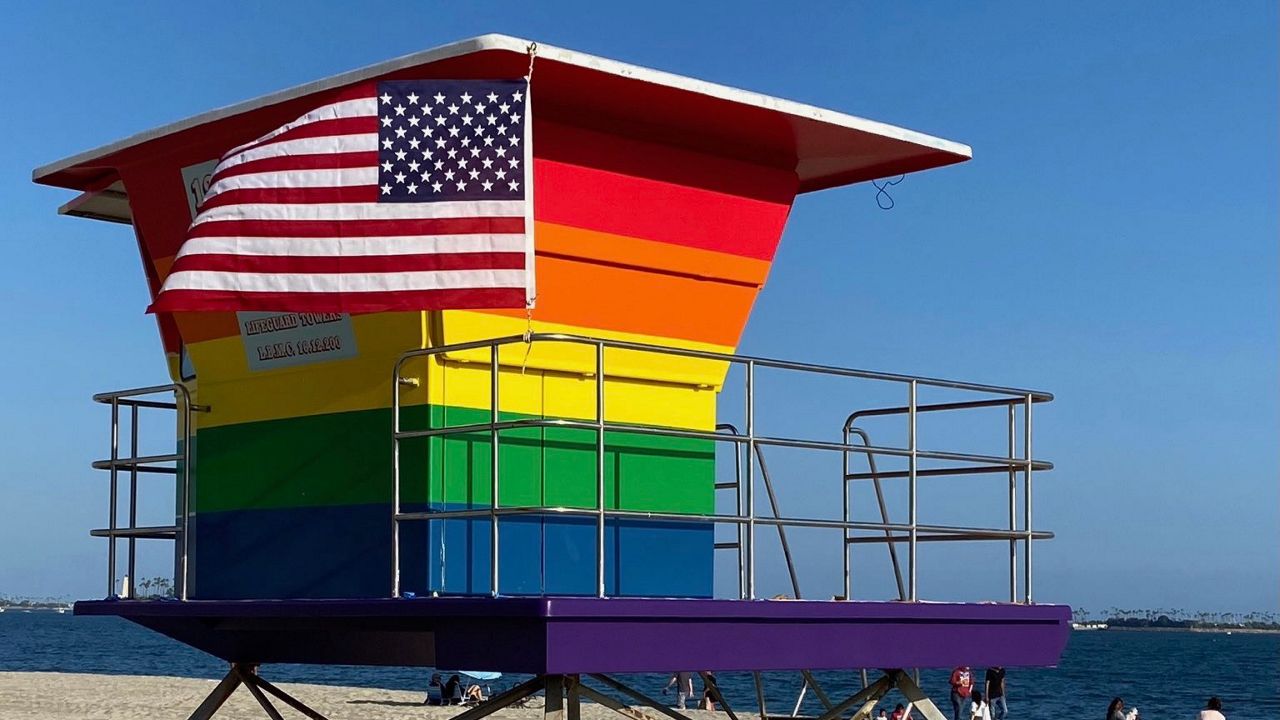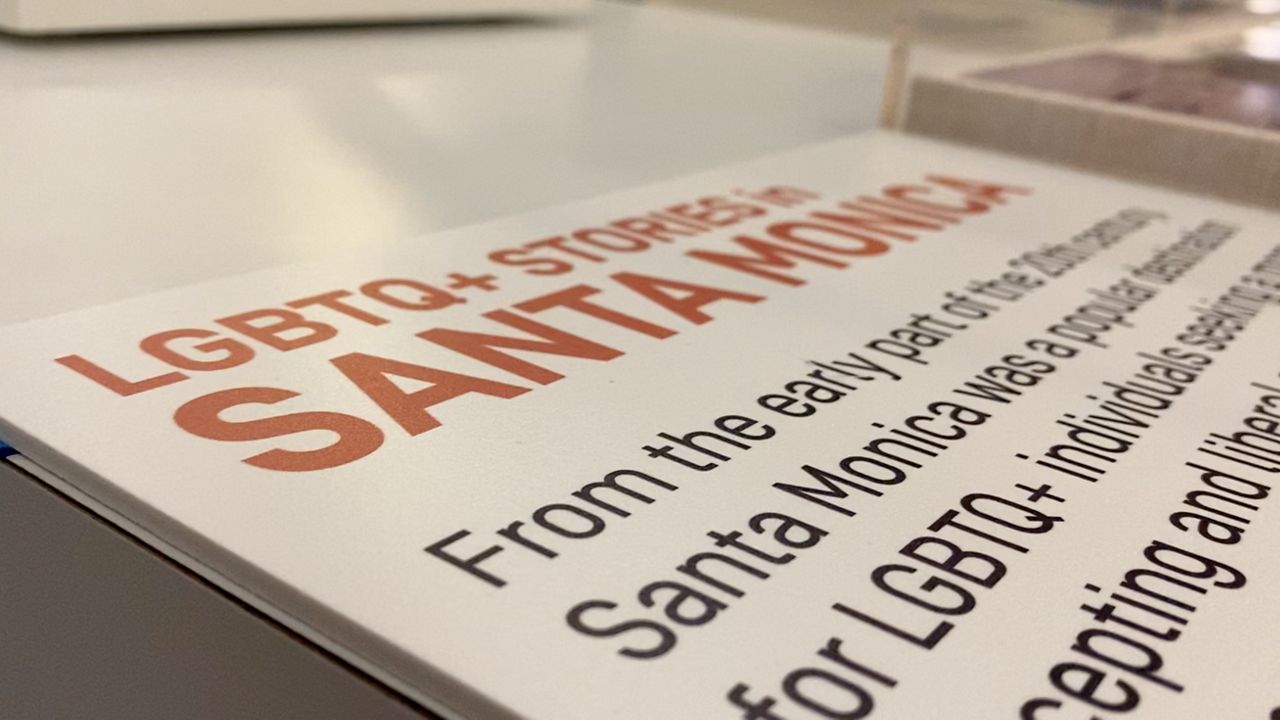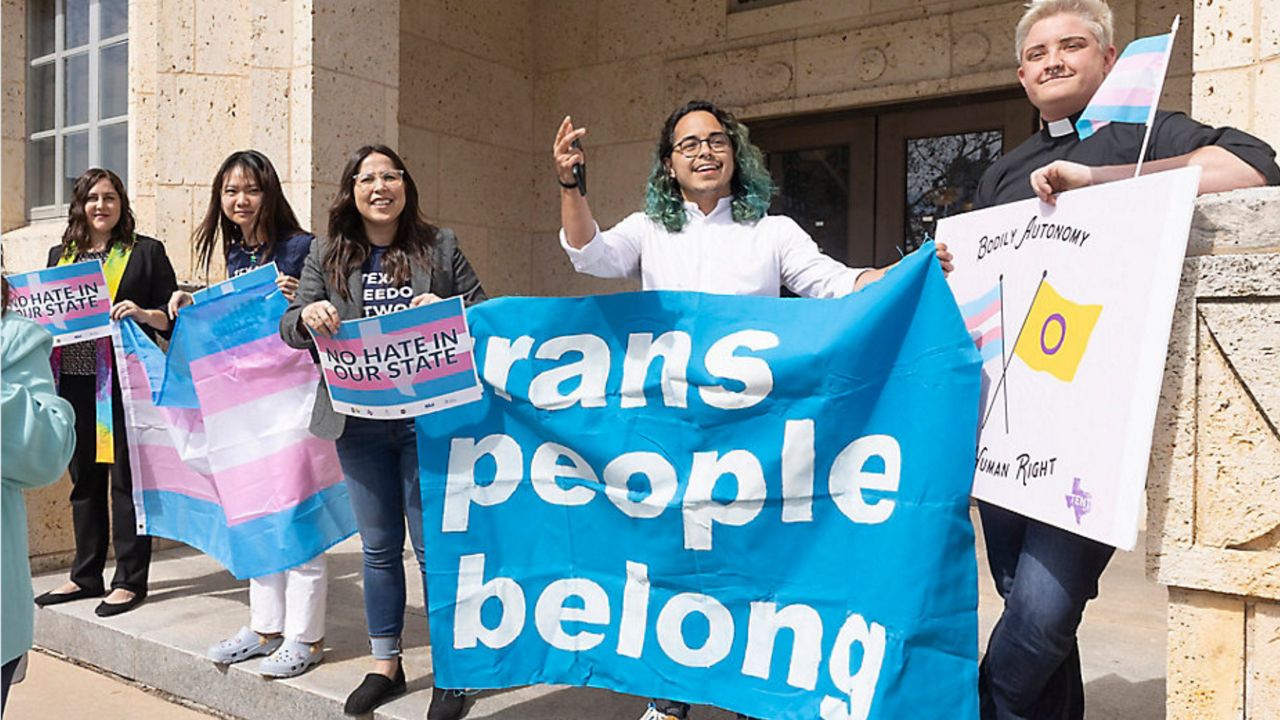LOS ANGELES (CNS) — Los Angeles County leaders Saturday celebrated the painting of two lifeguard towers with the colors of the Progress Pride Flag to honor the history of what became known as Ginger Rogers Beach, a traditional coastal haven for the LGBTQ+ community.
Towers 17 and 18 are located on Ginger Rogers Beach, which is part of Will Rogers State Beach north of the Annenberg Community Beach House in Santa Monica.
According to the office of Supervisor Lindsey Horvath, who led Saturday's 10 a.m. celebration, the stretch of beach became a popular destination for gay men as far back as the 1940s. It was soon dubbed Ginger Rogers Beach in honor of the film legend.
"I was so proud to be in community celebrating Ginger Rogers Beach. Today, we're declaring that Ginger Rogers is where love wins. It's where community wins. And it will always be a place where everyone will belong," Horvath tweeted Saturday afternoon.
The location evolved into a focal point of political activism, ranging from fundraisers for AIDS victims to petition drives opposing the Vietnam War.
Horvath was joined by ONE Archives Foundation, representatives of county departments and local activists to unveil the towers painted by graphic designer-illustrator-muralist Kat Bing, along with educational signage outlining the history of the beach.
A beach cleanup was held in partnership with Heal the Bay at 8:30 a.m. prior to the Ginger Rogers program and celebration.
"For too long Ginger Rogers Beach has lived in the shadows, without having its full story and name known by Los Angeles outside of the LGBTQ+ community," Horvath's office said.
Horvath said the beach in a "post-war era" provided a refuge from discrimination that many LGBTQ+ people faced elsewhere. Organizers gathered signatures against McCarthyism there, eventually leading to the creation of the Mattachine Society, one of the first gay rights organizations.
In the 1980s and 1990s, the beach became a hot spot for social and fundraising events to help those suffering through the AIDS crisis.
San Diego's Gay and Lesbian Times described it as the "West Coast's answer to the Statue of Liberty" in 1995.
Rogers appeared in more than 70 films during Hollywood's "Golden Age" — including 10 classic musical comedies with Fred Astaire. She died in 1995 at age 83.











